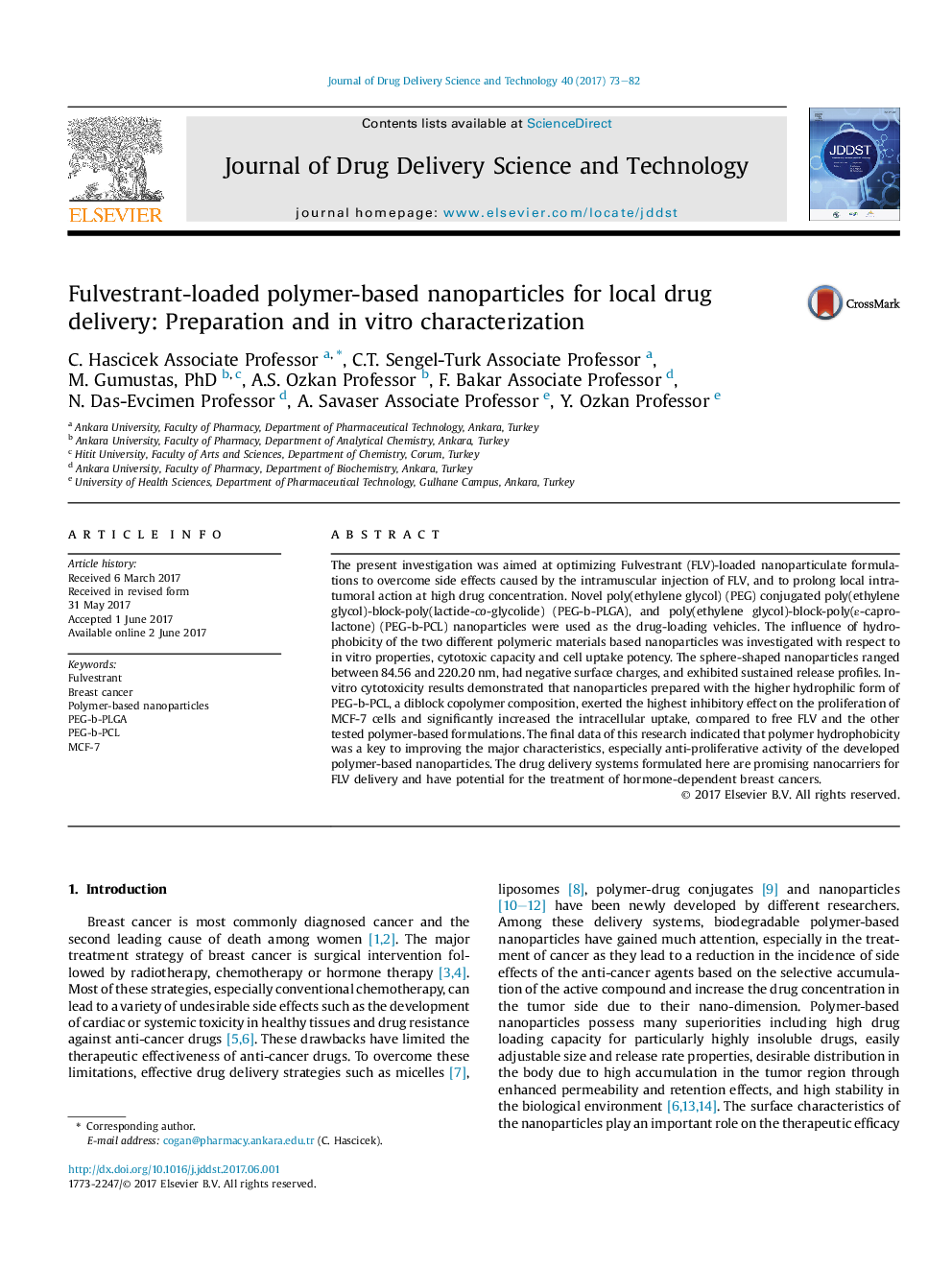| Article ID | Journal | Published Year | Pages | File Type |
|---|---|---|---|---|
| 5548096 | Journal of Drug Delivery Science and Technology | 2017 | 10 Pages |
The present investigation was aimed at optimizing Fulvestrant (FLV)-loaded nanoparticulate formulations to overcome side effects caused by the intramuscular injection of FLV, and to prolong local intratumoral action at high drug concentration. Novel poly(ethylene glycol) (PEG) conjugated poly(ethylene glycol)-block-poly(lactide-co-glycolide) (PEG-b-PLGA), and poly(ethylene glycol)-block-poly(ε-caprolactone) (PEG-b-PCL) nanoparticles were used as the drug-loading vehicles. The influence of hydrophobicity of the two different polymeric materials based nanoparticles was investigated with respect to in vitro properties, cytotoxic capacity and cell uptake potency. The sphere-shaped nanoparticles ranged between 84.56 and 220.20 nm, had negative surface charges, and exhibited sustained release profiles. In-vitro cytotoxicity results demonstrated that nanoparticles prepared with the higher hydrophilic form of PEG-b-PCL, a diblock copolymer composition, exerted the highest inhibitory effect on the proliferation of MCF-7 cells and significantly increased the intracellular uptake, compared to free FLV and the other tested polymer-based formulations. The final data of this research indicated that polymer hydrophobicity was a key to improving the major characteristics, especially anti-proliferative activity of the developed polymer-based nanoparticles. The drug delivery systems formulated here are promising nanocarriers for FLV delivery and have potential for the treatment of hormone-dependent breast cancers.
Graphical abstractDownload high-res image (243KB)Download full-size image
